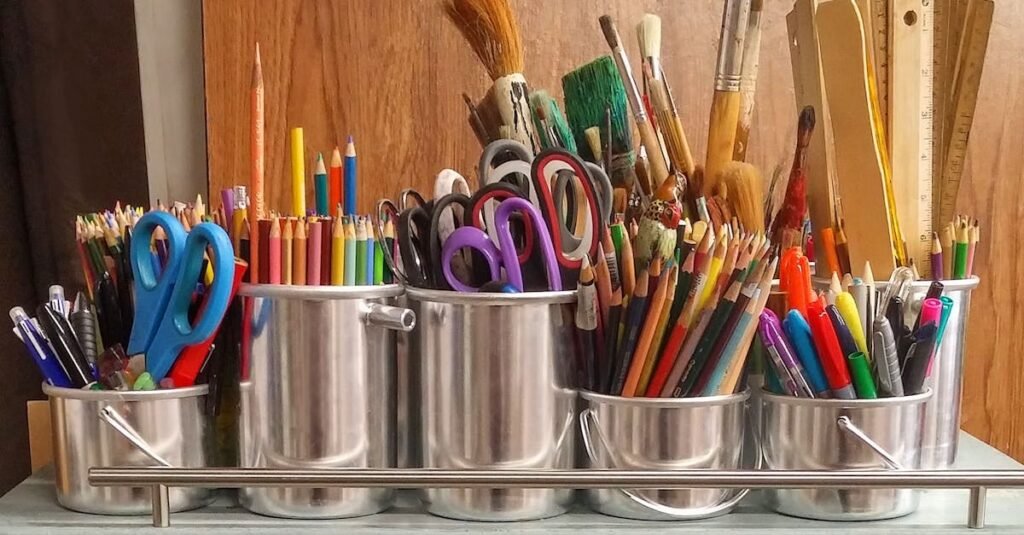“Warning: May cause spontaneous happiness and glitter everywhere.”
The scissors snip, the paper flies, A cardboard castle starts to rise. The glue is gloopy, sticky, thick, A shiny jewel begins to stick.
The paint is drippy, green, and blue, It makes a mess, and that’s okay too! A rainbow splash, a tiny dot, A perfect picture on the spot.
The glitter shakes, a silver shower, It’s stuck on everything, a flower! On hands, on noses, in your hair, We simply laugh and do not care.
For in this space, a happy place, We wear a smile upon our face. With paper, yarn, and things untold, We turn a simple story to gold. Can’t do this with an Ipad screen!
Here are some of the key skills developed through arts and crafts: get the sketchbook out, and the screen off!
- Fine Motor Skills: Activities like cutting with scissors, gluing small pieces, and drawing help to develop the muscles and coordination in a person’s hands and fingers.
- Creativity and Imagination: Arts and crafts provide a way to turn an idea into something real. It encourages thinking outside the box and trying new things without a fear of failure.
- Problem-Solving: When a craft doesn’t go exactly as planned, you have to figure out a new way to make it work. This teaches critical thinking and adaptability.
- Patience and Perseverance: Some projects take time and a lot of focus. Sticking with a project from start to finish helps to build patience and the determination to see a task through.
- Following Instructions: Whether it’s a step-by-step guide or a new technique, arts and crafts teach you how to follow directions carefully to get the desired result. The results of a no screen break!
https://www.nhs.uk/nhs-services/opticians
https://www.nhs.uk/conditions/sprains-and-strains
https://www.nhs.uk/symptoms/dry-eyes
The most effective way to prevent eye strain from screens is to give your eyes a break. Here are some of the most common and effective tips you can use right away:
The 20-20-20 Rule
This is a simple and highly effective rule that optometrists recommend. It works like this:
- Every 20 minutes, take a 20-second break.
- During this break, look at something at least 20 feet away.
This gives your eye muscles a chance to relax and refocus, which helps prevent fatigue.
Adjust Your Screen and Workspace
Your setup can make a huge difference in reducing eye strain.
- Position your screen: Your screen should be about an arm’s length away from you. The top of the screen should be at or just below eye level.
- Reduce glare: Position your screen to avoid reflections from windows or bright lights. Use an anti-glare screen protector if needed.
- Adjust brightness: Match your screen’s brightness to the light in the room. Don’t let your screen be the brightest source of light in your environment.
Other Helpful Tips
- Remember to blink: When we’re focused on a screen, we tend to blink less, which can lead to dry eyes. Make a conscious effort to blink more often.
- Use artificial tears: If your eyes still feel dry and irritated, over-the-counter lubricating eye drops can help.
- Get a sight test: If you regularly experience eye strain, it’s a good idea to see an optometrist. They can check if you need glasses, or a specific prescription just for computer use.
- Take regular breaks: Beyond the 20-20-20 rule, get up and away from your desk for longer breaks. This benefits your entire body, not just your eyes.


